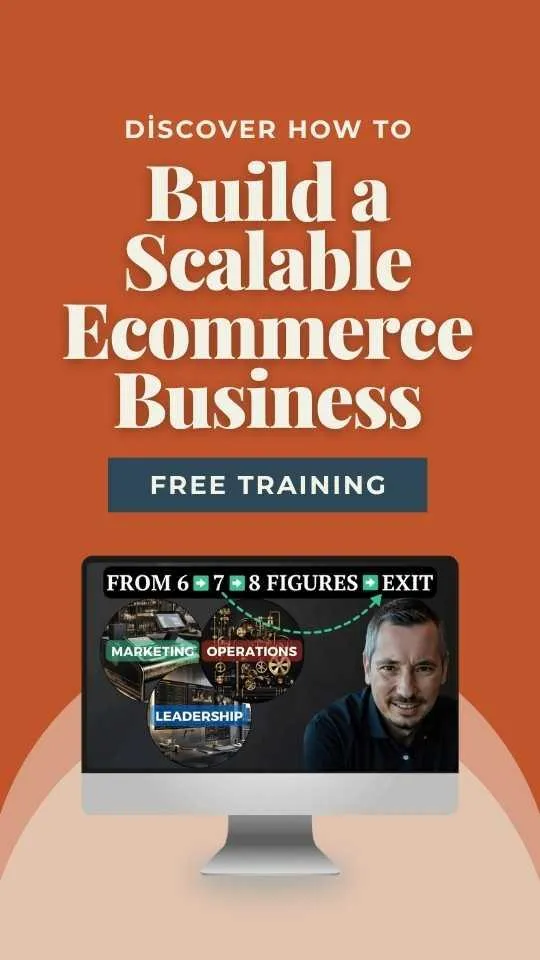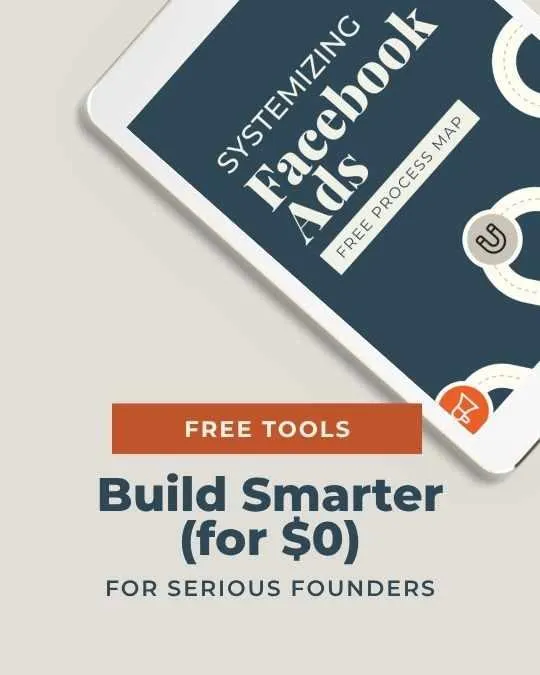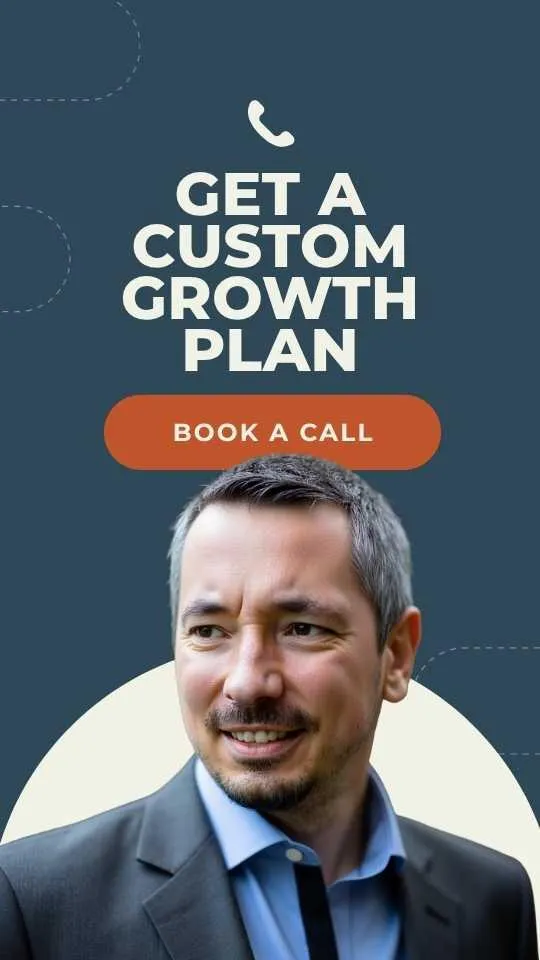How to Craft a Unique Value Proposition for Your eCommerce Store: Stand Out and Sell More
Understanding your value proposition can set your eCommerce store apart from the rest. What makes your product stand out in a sea of similar offerings? Your unique value proposition (UVP) clearly defines why customers should choose you over the competition.
Crafting a compelling UVP isn't just about what you're selling. It's about communicating the benefits and value that your product provides. This is where knowing your target audience plays a huge role. You can't appeal to everyone, so focus on who will benefit the most from what you offer.
Bringing your UVP into your marketing strategy is key. Once you have it, you need to make sure it's visible everywhere. Consistency is your friend here, whether it's on your website, social media, or ad campaigns. This is how you grab attention and keep it.
Key Takeaways
Identify what sets your product apart.
Focus on communicating benefits to your target audience.
Ensure your UVP is consistent across all channels.
Understanding Your Value Proposition
Your eCommerce store needs a clear, powerful value proposition. It highlights your edge over competitors and makes your brand appealing. Understanding its key elements helps you connect with the right customers.
What Is a Value Proposition?
A value proposition is the magic ingredient that makes customers choose you. It’s a promise that clearly states what you offer. Your proposition tells customers how you’ll solve their problems or meet their needs better than anyone else.
For an eCommerce store, this could mean offering the best prices, unique products, or exceptional customer service. Your unique value proposition should be short and to the point. The goal is to make an instant impression. Remember, it’s all about standing out and showing customers why your brand is the best choice for them.
The Importance of Clarity
Keeping things clear is crucial. If your message isn’t clear, customers won't know what you’re offering. A strong value proposition cuts through the noise. It needs to be simple and direct, speaking directly to the customer’s needs.
Use simple language and avoid jargon. Make it easy for anyone to understand why they should buy from you. Clear communication boosts trust and helps potential customers feel confident about your brand. They shouldn't have to guess what you're all about. Lay it all out plainly for them—because if they don’t get it, they won’t buy it.
Customer Research Fundamentals
Doing good customer research is like gathering treasure. It tells you what your customers want and need, and what they dislike. Talk to potential customers, survey them, learn their habits. What problems are they facing?
Identify your target audience first. Get into their shoes, understand their lifestyle, their pain points. This will help you craft a proposition that appeals directly to them. Use demographic info, buying behaviors, and preferences to shape your message. Dig deep into their motivations and align your offers with their desires. The better you know your customers, the better your value proposition will resonate.
Analyzing the Competition
Understanding your competition is key. What makes them tick? What do they offer that you don't? This knowledge helps you identify your competitive advantage. Study their websites, their value propositions, read customer reviews.
Figure out what they do well and where they fall short. This gives you room to differentiate and innovate. Use this info to position yourself as the superior choice. Maybe you offer faster delivery, better prices, or unique products. Knowing your competitors' strengths and weaknesses will let you create a killer proposition that sets you apart and captures your market.
Crafting Your Unique Value Proposition
Creating a unique value proposition (UVP) for your eCommerce store is like building a bridge that connects your product to your customer's needs. You need to weave in what makes you stand out while addressing what your customers crave.
Decoding the 'Unique' in UVP
What makes your eCommerce store different? Think about your Unique Selling Proposition (USP). Maybe it's an exclusive product or top-notch service. This is where the magic happens.
You need to spell out what sets you apart. Don’t shy away. Whether it’s same-day shipping, eco-friendly materials, or unbeatable prices, make it crystal clear. Real-world examples can help too. Consider how brands like TOMS set themselves apart with a strong social mission. Don't just blend in. Stand tall and show what makes you unique.
Reflecting Customer Pain Points
Customers have problems. Big, small, annoying—they're all there. Knowing these pain points is your secret weapon.
You’ve gotta dig deep. Ask questions. Conduct surveys. What keeps your customers up at night? Once you know, craft solutions that speak directly to these problems. Highlight how your product turns those frowns upside down.
Use specifics. If you're selling skincare products, talk about how you tackle dry skin or acne frustrations. Make them see that you've got the answers they need.
Balancing Benefits with Solutions
Benefits are great. Solutions are even better. Your UVP should mix both like a good smoothie.
Let’s break it down. List the benefits your product brings. More energy, better skin, more free time. Then, connect them to specific solutions. Don’t just say your coffee is energizing—explain how its unique blend keeps folks buzzing without the jitters.
People are looking for results. Bullet points can make this stand out, showing customers exactly what they’re getting. Keep the focus on real-world outcomes. They need to see the difference.
Bringing in the X-Factor
What’s your special sauce? The "X-Factor" is that extra zing that leaves your competitors in the dust.
The X-Factor might be about how your brand feels. It could be an unforgettable design, a quirky brand story, or top-notch customer service. Dive into what makes your brand memorable. Something customers will talk about.
Integrate this with your UVP. Whether it's a memorable logo or a catchy slogan, include it where it counts. Customers should remember not just what you sell, but the experience you provide. It’s about leaving a lasting impression.
Targeting the Right Audience
Nailing down who you’re selling to is key. If you don’t know your audience, it’s like shooting in the dark. Let’s dive into how you can connect with your ideal crowd and make your message hit home.
Identifying Your Ideal Customer
First things first, you need to know who’s buying your stuff. Think about who benefits the most from what you offer.
Who are they? What do they need?
Grab a piece of paper and jot down details about your ideal customer. Age, gender, location, income level—write it all down. Consider their lifestyle and interests too. Are they tech-savvy or old school? Love outdoor adventures or prefer a cozy night in? Knowing these traits helps shape how you talk to them.
Creating a Buyer Persona
Now, let’s make it official with a buyer persona. This is a fun one. You’re turning your ideal customer into a character. Give them a name. Picture them in your mind.
What’s a day in their life like?
List out what problems they face. When they wake up, what’s the first problem they think about? Is it a nagging pain or an annoying task? How does your product make their life easier? A solid buyer persona makes it clear where your product fits into their daily grind.
Aligning UVP with Target Audience
Once you know your audience, align your Unique Value Proposition (UVP) with them. Your UVP is not about being the cheapest or fastest. It’s about how you solve their problems uniquely.
Make it crystal clear why you're the best choice.
Use simple language. Speak directly to their needs. If your audience values eco-friendliness, highlight how your products respect the planet. It’s not enough to just have a UVP; it must align with what your customers care about. That’s what makes it stick.
UVP in Action: Real-World Examples
Want to know what makes a unique value proposition (UVP) really pop? Let’s check out some brands that nailed it. From thriving ecommerce success stories to innovative subscription services, these examples show the power of a strong UVP.
Ecommerce Brand Success Stories
Take a look at how Dollar Shave Club shook up the shaving world. Their UVP was clear and catchy: affordable, high-quality razors delivered to your door. Easy, right? It's brilliant because it solved a real problem—expensive razors and annoying trips to the store. Dollar Shave Club didn't just offer products; they offered convenience and savings.
Amazon’s UVP is another powerhouse. They promise a vast selection, competitive pricing, and lightning-fast delivery. It's like they’ve turned speed and choice into their superpower. With Amazon Prime, they hooked customers with fast access to nearly everything. Now, that’s an ecommerce brand with a killer UVP in action.
Subscription Box Triumphs
Let's talk about Birchbox. They redefined beauty shopping with a personalized subscription box. Their UVP? Discover new beauty products every month without the hefty price tag. It’s a game-changer for anyone wanting to explore cosmetics without commitment. The thrill of trying something new keeps customers excited.
Another subscription star is Blue Apron. They make home cooking easy and stylish. Their UVP offers fresh ingredients and recipes delivered right to your doorstep. Perfect for those who want gourmet meals without the grocery hassle. Blue Apron’s promise? Delicious dinner experiences minus the stress.
The Merino Wool Revolution
Ever heard of Allbirds? They’ve mastered the art of comfy, eco-friendly footwear. Their UVP revolves around merino wool. They offer shoes that are soft, lightweight, and sustainable. You get style and comfort with a conscience. Allbirds’ simple yet effective UVP appeals to eco-conscious shoppers.
Merino wool isn't just for shoes. Check out Smartwool, a brand that took warmth and breathability to the next level. They created top-notch outdoor gear with a UVP highlighting quality and comfort in extreme conditions. It's not just clothing; it's performance wear built for adventure enthusiasts.
Communicating Your UVP
You've got that killer unique value proposition, but how do you share it with the world? It's time to make sure your message doesn't just sit there—it speaks, it persuades, and it converts.
Messaging That Resonates
Your messaging has to hit home. It's not just about flashy words; it's about words that your audience feels. Dive into your customers' minds. What keeps them up at night? What do they really need? Talk their language.
Use short, snappy sentences that get to the point. Neither you nor your customers have time to waste. You need to make the most of it.
Use platforms like Facebook ads to spread your message. These ads can help target your ideal customers. Make every word count.
Optimizing for Conversion
Now let's talk about turning interest into sales. Your value proposition should be front and center on your online store. Place it where it's impossible to ignore. Above the fold, near your call-to-action buttons, wherever your customers are most likely to see it.
Pair your message with strong imagery. Your value proposition should be the hero, supported by visuals that reinforce the message.
Use conversion optimization techniques like A/B testing to see what works best. Test different versions, tweak, and adjust until you've got a winner. Small changes can lead to big results.
Testing and Refining Your Message
Test, test, and test again. That's the name of the game when it comes to perfecting your value proposition.
Start with A/B testing. Try different phrases, images, or placements on your site. See what gets the best reaction.
Feedback is gold. Listen to what your customers are telling you. Adjust your messaging based on their responses. Stay flexible and keep improving.
Online stores need to constantly evolve. Your unique selling proposition isn't a "set it and forget it" situation. Stay ahead by making little tweaks and changes often.
Integrating UVP in Your Marketing Strategy
When you know what makes your store special, you gotta shout it from the rooftops. Put your Unique Value Proposition (UVP) in all parts of your marketing plan. This gets more people to your site and keeps them there. It also helps build stronger customer relationships.
SEO and Your UVP
Search engines love clear, strong messages. Your UVP should be front and center on your website’s main pages. Use keywords that connect directly to your UVP. This’ll help boost your ranking on Google.
Example: If you sell eco-friendly sneakers, mention it often. Make sure your product pages and blog posts reflect what makes your shoes a greener choice. Incorporate these keywords into your meta tags and descriptions too. This boosts visibility when people search online.
Headings and subheadings on your site should also echo your UVP. This reinforces your message and makes it clear to both visitors and search engines what you’re all about. A strong UVP in your SEO strategy can drive more traffic and improve your conversion rate.
Leveraging Social Proof
People wanna know they’re making good decisions. Show them that others love your product. Sharing testimonials and reviews that highlight your UVP builds confidence.
Example: Got a customer who wrote a glowing review about how your product changed their life? Share it! Post it on your website and social media. Let others see how your store delivers value.
User-generated content is your friend. Encourage customers to share their stories or photos with your product. It’s powerful stuff. Social proof reinforces your UVP by showing real-life benefits and happy customers. This not only boosts trust but also pumps up customer experience.
Consistency Across Channels
Your UVP should be the same everywhere. Whether it’s your website, social media, or email campaigns, your message should echo loud and clear.
This builds a strong, reliable brand voice.
Consistency is key. If you say you’re the fastest delivery service on your homepage, make sure it matches what you say in your Instagram posts or email newsletters.
Example: Use the same language and visuals that reflect your UVP across every channel. A consistent message keeps your audience engaged and makes them remember you.
It creates a seamless experience for your customers, no matter where they interact with your brand.
By sticking to the same UVP everywhere, you make it easy for customers to understand what you offer and why they should choose you over the competition.







